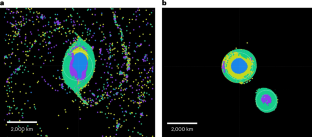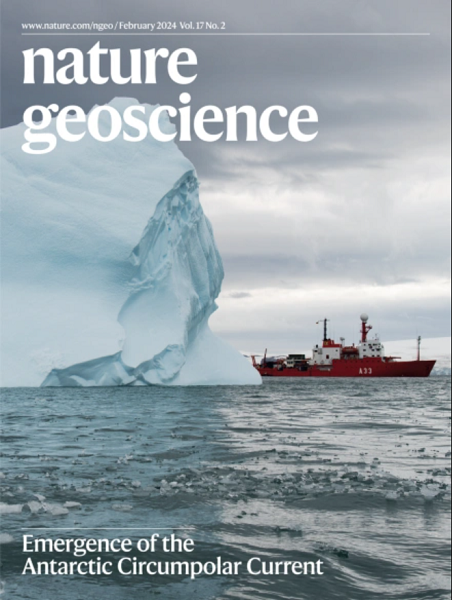捕捉到一颗环绕冥王星的古冥卫一
IF 15.7
1区 地球科学
Q1 GEOSCIENCES, MULTIDISCIPLINARY
引用次数: 0
摘要
冥王星和冥卫一是已知外太阳系外海王星天体中最大的双星系统。它们共享的外轨道轴表明它们的进化史和碰撞起源是有联系的。它们的半径分别为~ 1200公里和~600公里,而冥卫一的宽圆形轨道约为冥王星半径的16倍,这需要一种形成机制,将大量质量送入轨道,并具有足够的角动量来驱动潮汐轨道膨胀。在这里,我们使用包括物质强度在内的模拟,对冥王星撞击卡戎的过程进行了数值模拟。在我们的模拟中,摩擦分配了撞击动量,导致冥卫一和冥王星暂时连接在一起,而不是合并,因为撞击与目标的旋转一致。在这种“亲吻和俘获”的制度下,身体的结合被力量所阻止。对于与系统角动量一致的前进目标旋转,卡戎然后潮汐解耦并上升到一个近圆轨道,从它向外迁移到与当前轨道一致的距离。在这种情况下,冥卫一相对完整地被捕获,保留了它的核心和大部分地幔,这意味着冥卫一可能和冥王星一样古老。本文章由计算机程序翻译,如有差异,请以英文原文为准。


Capture of an ancient Charon around Pluto
Pluto and Charon are the largest binary system in the known population of trans-Neptunian objects in the outer Solar System. Their shared external orbital axis suggests a linked evolutionary history and collisional origin. Their radii, ~1,200 km and ~600 km, respectively, and Charon’s wide circular orbit of about 16 Pluto radii require a formation mechanism that places a large mass fraction into orbit, with sufficient angular momentum to drive tidal orbital expansion. Here we numerically model the collisional capture of Charon by Pluto using simulations that include material strength. In our simulations, friction distributes impact momentum, leading Charon and Pluto to become temporarily connected, instead of merging, for impacts aligned with the target’s rotation. In this ‘kiss-and-capture’ regime, coalescence of the bodies is prevented by strength. For a prograde target rotation consistent with the system angular momentum, Charon is then tidally decoupled and raised into a near-circular orbit from which it migrates outwards to distances consistent with its present orbit. Charon is captured relatively intact in this scenario, retaining its core and most of its mantle, which implies that Charon could be as ancient as Pluto. Numerical simulations suggest that Pluto’s moon Charon was captured intact, in a scenario in which the two bodies temporarily merged in a collision but did not coalesce due to solid strength effects.
求助全文
通过发布文献求助,成功后即可免费获取论文全文。
去求助
来源期刊

Nature Geoscience
地学-地球科学综合
CiteScore
26.70
自引率
1.60%
发文量
187
审稿时长
3.3 months
期刊介绍:
Nature Geoscience is a monthly interdisciplinary journal that gathers top-tier research spanning Earth Sciences and related fields.
The journal covers all geoscience disciplines, including fieldwork, modeling, and theoretical studies.
Topics include atmospheric science, biogeochemistry, climate science, geobiology, geochemistry, geoinformatics, remote sensing, geology, geomagnetism, paleomagnetism, geomorphology, geophysics, glaciology, hydrology, limnology, mineralogy, oceanography, paleontology, paleoclimatology, paleoceanography, petrology, planetary science, seismology, space physics, tectonics, and volcanology.
Nature Geoscience upholds its commitment to publishing significant, high-quality Earth Sciences research through fair, rapid, and rigorous peer review, overseen by a team of full-time professional editors.
 求助内容:
求助内容: 应助结果提醒方式:
应助结果提醒方式:


